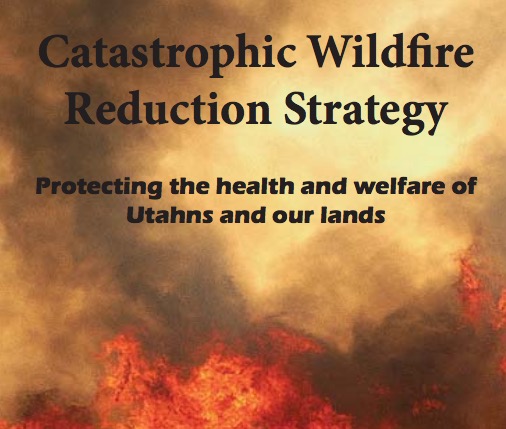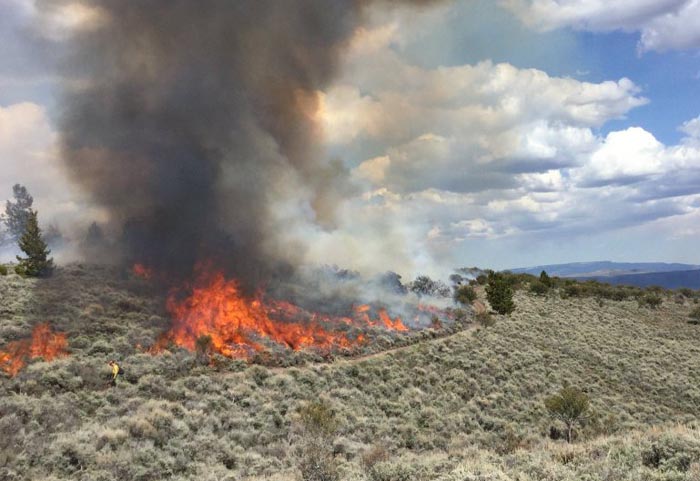Hazing resulted in her seeking another line of work.
After working for one season as a rookie on a 21-person firefighting hotshot crew in Utah, Melissa Lewis decided not to return the following season.
She had been excited to begin the job, and felt that having recently hiked 2,178.2 miles of the Appalachian Trail solo and stepping up her physical training would make her a good fit on the crew.
Below is an excerpt from an article she wrote for the Huffington Post, published last month:
…Unfortunately, the job was not what I hoped it would be. The work itself was much as I had imagined and trained for, but the behavior of my co-workers was not. I quickly learned that the hazing of rookies is a common practice. A male firefighter who recently had his rookie year told me that because he had been hazed, it was now his turn to haze me. Hazing lasted all season for us three “newbs.” For instance, we three were expected to rush to do the lowliest of tasks and faced verbal abuse if we were slow.
On top of that, because so many of them derided anything feminine in correlation to our work, I felt I had to prove over and over again why I, as a woman, deserved to be there. In discussing it with another firefighter, he agreed that it wasn’t fair, but he had accepted it as “just the way things are” in this male-dominated field.
As the season progressed, so did my feelings of isolation and depression. Some of my co-workers routinely made statements belittling and objectifying women in front of me. While time has erased many of the words, I haven’t forgotten how they made me feel. They further fueled my downward spiral; never have I felt so low about myself simply for being female…
I am not aware of any hazing on the two hotshot crews I was on, but have heard stories in recent years about rookies being tied up with duct or fiber tape, and “blanket parties” where the victim is covered with a blanket while he is beaten by multiple firefighters who are too cowardly to show their faces. These are assaults and could result in jail time if reported to law enforcement.
In April and May of this year there were two examples of rookie firefighters on their first or second day on the job being hospitalized with conditions that are sometimes fatal. Both of the incidents, Rhabdo and heat stroke, occurred after strenuous physical training that may have been appropriate for a seasoned, experienced hotshot firefighter, but apparently was not feasible for a person that walked in off the street.
The hazing reported by Ms. Lewis and the careless disregard for the physical safety of the two new employees that suffered very serious injuries, show what may be too common in the ranks of wildland firefighters. If the agencies want to encourage people, and especially women, to apply for jobs and eventually make a career choice of being a firefighter, these examples and the facts that were revealed in the September 22 Congressional hearing about sexual harassment and hostile work environments will make it very difficult to recruit and retain quality personnel.
Do you think any women who watched that hearing will enthusiastically apply for a job as wildland firefighter with the federal agencies?
I have always felt that the performance and behavior of a crew is a reflection of the personality and ethics of the supervisor; in the case of a hotshot crew, the Crew Superintendent. And if others higher in the chain of command look the other way and become enablers of a hostile work environment, it can build to a point where good people quit and in very rare cases, a crew is disbanded.
Rarely in the wildland fire service or land management agencies are the perpetrators or enablers held accountable for their actions. Too often they are scolded or transferred, much like the Catholic priests accused of assaults on altar boys.
During the Congressional hearing last month the National Park Service’s Deputy Director for Operations, Michael Reynolds, testified that he was not aware of anyone in his agency being fired for sexual harassment. However, a week after the hearing, the Superintendent of Yosemite National Park who was identified at the hearing as contributing to a hostile work environment (not sexual harassment), resigned after being told he was being transferred from California to Denver, Colorado.








